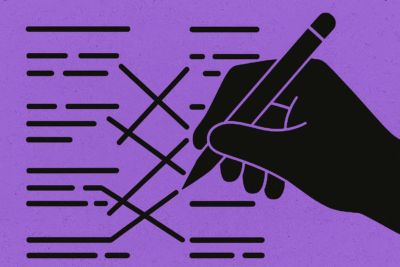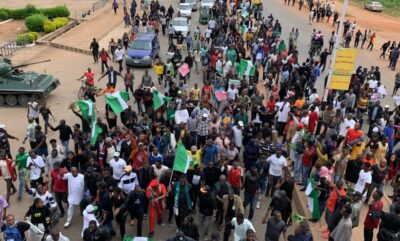Karma is one of the most well-known concepts associated with Buddhism in the West. In many Asian countries where Buddhism has shaped the social and cultural landscape for more than a millennium, karma is frequently invoked even in everyday conversation. Nonetheless, how people understand karma is often unclear. It is commonly said that someone has “good karma” when good things happen to them or that misfortune is the result of “bad karma.” This seemingly straightforward, dualistic interpretation fails to capture the complexity of karma and its meaning in life.
Worse still, the concept of karma has often been used to justify unfavorable conditions by attributing them to the accumulation of negative karma from a person’s previous lives. In this view, discrimination against women is explained as the result of bad karma incurred in women’s past lives. Extending this logic, social injustice is also justified, as those who suffer are presumed to deserve their fate due to karmic debts. If this interpretation is accepted, Buddhism risks becoming complicit in societal discrimination, whether based on sex, race, class, or systemic structures, by providing a rationale for injustice and leaving it unchallenged. This interpretation does not align with Buddhist teaching that emphasizes the equality of all beings based on relational identity.
Years ago, in my Introduction to Asian Philosophy course, a student remarked that the movie Pay It Forward (2000) is a Buddhist film that illustrates how karma works. In the movie, a seventh grader named Trevor proposes that if each person helps three others, a ripple effect will be created as each of those three continues the chain of good deeds. On the surface, the film seems to reflect the idea that performing good deeds leads to the accumulation of good karma and future rewards. However, at the end of the movie—spoiler alert—Trevor dies while trying to help a friend who is being bullied. What the film ultimately portrays, then, is not a simplistic system of reward and punishment but the profound significance of one’s intention to act and the exercise of agency in bringing about change.
Two key aspects of karma warrant closer attention in this context: agency and (non-)temporality. Karma literally means “action,” and the Buddhist theory of karma holds that every deed has consequences that shape future experiences and actions. However, karmic causality does not follow a straightforward arithmetic logic, as is often assumed. Instead, it is far more intricate and largely beyond the grasp of ordinary understanding, a complexity that becomes apparent when we consider the Buddhist worldview of radical interconnectedness. The same action can yield vastly different outcomes depending on the conditions in which it is performed. As Jay Garfield explains, while Buddhist texts may appear on the surface to generalize causes and effects, karma is not a simple calculus of utility or merit points.
The understanding of karma as merely a system of reward and punishment often stems from viewing it within a linear temporal framework, dividing time into past, present, and future. This perspective risks confining the actor within a deterministic model of moral causality. An alternative is to shift the focus from linear temporality to non-temporality and agency, emphasizing the capacity to act meaningfully in the present with full awareness of the interconnectedness of each action across time. People often envision awakening as a temporal goal that comes at the end of long practice. Buddhist schools, however, show that awakening should in fact take place in each and every moment, meaning that each decision should be made with utmost attention to the causes, conditions, and consequences of the action.
Some Korean Buddhist nuns’ teachings can be understood as exemplifying the concept of karma as a call to exercise agency for authentic living. Kim Iryŏp (1897–1961), for example, emphasizes agency and the overcoming of self-imposed and socially constructed limitations as central to Buddhist practice. A former feminist activist before entering monastic life, Iryŏp advocates for breaking free from what she calls the “small self,” meaning the self that is constrained by socially imposed norms and limited in its capacity for freedom.
Iryŏp defines the true nature of the self as freedom, that is, the capacity to exercise agency and transcend the constraints imposed by external conditions, thereby becoming the creator of one’s own existence. She refers to this liberated self as “the great self” and characterizes its actions as expressions of “creativity.” In this view, action is the foundation of existence, and liberated action, or creativity, is valuable not because of its cumulative moral points over time, but because each action represents the full expression of one’s freedom. Unbound by linear temporality, such actions contribute to the alleviation of suffering both for oneself and for others by breaking the hold of various forms of attachment.
Another Korean Buddhist nun, Daehaeng (1927–2012), expresses the activation of agency through her signature teaching of chuin’gong (主人空), meaning “the master of one’s life that is empty.” This phrase conveys a dual insight: that one should take responsibility for one’s life, but that this must not lead to egocentrism, as the self is fundamentally empty. While affirming the traditional Buddhist notion of emptiness that nothing possesses an independent, enduring essence, Daehaeng nonetheless emphasizes the self’s agency. Precisely because the self is empty, it is not fixed or bound by attributes imposed by external conditions such as gender or social class. Emptiness, in this view, does not negate agency; it enables it, echoing Iryŏp’s concept of the great self. Freed from rigid identity and conditioned constraints, the self is empowered to act with wisdom and compassion amid the ever-changing conditions of life.
In both cases described above, karma, or action, is not about accumulating karmic residue, but about activating and expressing one’s capacity to act. Rather than framing karma within a moral dualism of good and bad, which risks fostering conformity to questionable moral codes or unjust social structures, karma, in this view, becomes a dynamic force for critical engagement and personal transformation.
Contemporary Black American Buddhism in the United States powerfully illustrates the dynamic interplay between karma and agency. Black American Buddhists such as Pamela Ayo Yetunde and Lama Rod Owens embrace Buddhist practice as a means of resisting intergenerational racism and systemic oppression. The centuries-long trauma of racism endured by Black Americans has given rise to a collective anger—an anger that, if not skillfully transformed, can fuel cycles of harm and violence. Rather than perpetuating such cycles, Black Buddhist practitioners turn to Buddhism to channel this anger into mindful resistance and transformative action. Yetunde even declares, “We sit together so we can stand together.” Their actions are not merely attempts to accumulate good karma; rather, they represent a conscious activation of agency in the face of a racist society, right here, right now. Like Iryŏp’s creative pursuits and Daehaeng’s teachings of chuin’gong, these actions reflect an active engagement with the world and with life itself.
The German American political thinker Hannah Arendt distinguishes between labor, work, and action: labor sustains life by producing necessities; work creates durable artifacts; but action, she argues, “means to take an initiative, to begin,…to set something into motion.” For Arendt, the capacity to begin is synonymous with the capacity for change and freedom. While one might be able to avoid labor or even work in life, she insists that without action, one is not truly alive. In light of Arendt’s emphasis on the importance of action in making changes and our argument for the centrality of agency in the theory of karma, we must also acknowledge that, in reality, not all actions represent the exercise of agency in a creative or constructive way. Buddhism offers a poignant caution against such actions through the concept of “ignorance,” a technical term referring to a fundamental misunderstanding of the nature of existence. Buddhism teaches that acting in ignorance of one’s existential condition generates suffering for oneself and others. Once we understand karma, or action, as the exercise of one’s agency aimed at eliminating suffering, karma or “intentional action,” as Buddhism puts it, becomes a form of resistance against anything that constrains individuals and keeps them in a state of ignorance.
Political philosopher José Medina emphasizes the epistemic dimension of resistance. What Buddhism refers to as ignorance, Medina describes as “insensitivity,” “numbness,” or “blindness” on the part of individuals or society toward the suffering and injustice experienced by oppressed groups. The effort to overcome such insensitivity is what Medina terms “epistemic resistance.” While Medina’s discussion primarily addresses the social and political dimensions of resistance, Buddhist practice, particularly in the context of Chan/Sŏn/Zen traditions, is not unfamiliar with epistemic resistance. These traditions are often interpreted as teachings aimed at awakening individuals from habituated and unreflective patterns of thought.
Karma, when understood as active resistance, is closely tied to the practice of attentiveness not only to one’s actions but also to the conditions in which those actions unfold. Resistance is often associated with protest against visible social or political injustices, as Medina discusses; but it should also involve confronting the subtler habits of mind such as fear, anger, attachment, or greed that impede one’s liberation. Socially engaged Buddhism addresses this issue, highlighting the social dimension of action, emphasizing structural violence and its role in producing suffering. To conceive of karma as active resistance, then, is to cultivate awareness and agency in ways that challenge both structural and internalized forms of domination.
Despite its long history, Buddhism is often perceived as lacking a robust social and political philosophy. My students frequently comment that Buddhism seems like an individualistic religion, an evaluation largely based on the assumption that practices such as meditation and self-cultivation, which Buddhism consistently emphasizes, belong solely to the private realm. As Leah Kalmanson argues, even solitary meditation can constitute a political act in the Buddhist worldview of interconnectedness. Similarly, Medina contends that epistemic resistance at the personal level is central to protest in its social and political dimensions. He defines protest not merely as a tool for delivering a message, but as a “transformative learning process.” In this view, individual mental transformation is deeply intertwined with broader social change.
This understanding of karma is more urgently needed today than ever, as powerful institutions increasingly fail to fulfill their responsibilities to protect and support people. If karmic action involves an individual’s exercise of agency and resistance to the ignorance that constrains them, then social movements can emerge from the actions of individuals and grassroots communities who challenge the status quo. Reframing karma as meaningful action grounded in awareness and agency offers new insight into the possibilities of both personal and collective transformation. For Arendt, the potential that arises through such action marks the beginning of hope.













